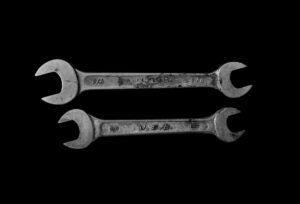In recent years, 3D tools have become increasingly prevalent across a wide range of industries, revolutionizing the way professionals approach design, prototyping, manufacturing, virtual reality, gaming, architectural visualization, and engineering. The rise of 3D tools can be attributed to advancements in technology, which have made these tools more accessible, affordable, and user-friendly. As a result, professionals in fields such as product design, engineering, architecture, gaming, and manufacturing have embraced 3D tools as essential components of their workflows.
The use of 3D tools has expanded beyond traditional industries and has found applications in fields such as healthcare, education, and entertainment. For example, medical professionals are using 3D tools to create detailed anatomical models for surgical planning and patient education. Educators are incorporating 3D tools into their curriculum to enhance learning experiences and provide students with hands-on opportunities to explore complex concepts.
In the entertainment industry, 3D tools are being used to create immersive experiences in virtual reality and gaming. The versatility and adaptability of 3D tools have contributed to their widespread adoption across diverse industries, making them indispensable for professionals seeking to stay ahead in their respective fields.
Key Takeaways
- 3D tools are increasingly being used across various industries, from entertainment to healthcare, for design, prototyping, and visualization purposes.
- The use of 3D tools has revolutionized the design and prototyping process, allowing for more efficient and accurate creation of products and concepts.
- 3D tools have significantly impacted manufacturing and production processes, enabling faster prototyping, reduced costs, and improved product quality.
- The use of 3D tools in virtual reality and gaming has enhanced the immersive experience for users, leading to more realistic and interactive environments.
- In architectural and engineering visualization, 3D tools have become essential for creating detailed and accurate representations of designs and structures.
How 3D Tools are Revolutionizing Design and Prototyping
Enhanced Design Capabilities
With 3D tools, designers can quickly iterate on their ideas, test different concepts, and visualize the final product before it goes into production. Furthermore, 3D tools have streamlined the prototyping process by allowing professionals to create physical prototypes directly from digital models. This has reduced the time and cost associated with traditional prototyping methods, such as CNC machining or 3D printing.
Improved Collaboration and Communication
Additionally, 3D tools have enabled designers to collaborate more effectively with other team members and stakeholders by providing a common platform for sharing and reviewing designs.
Competitive Advantage and Better End Products
As a result, the design and prototyping process has become more collaborative, iterative, and efficient, leading to better end products and a competitive edge in the market.
The Impact of 3D Tools on Manufacturing and Production Processes

The impact of 3D tools on manufacturing and production processes cannot be overstated. These tools have revolutionized the way products are manufactured by enabling the creation of complex geometries that were previously impossible or impractical to produce. Additive manufacturing technologies, such as 3D printing, have benefited greatly from the use of 3D tools, allowing manufacturers to produce intricate parts with high precision and minimal waste.
Furthermore, 3D tools have facilitated the implementation of digital manufacturing processes, such as digital twinning and simulation, which enable manufacturers to optimize production workflows and minimize downtime. By creating digital replicas of physical assets and processes, manufacturers can identify potential issues, test different scenarios, and make informed decisions to improve efficiency and productivity. In addition, 3D tools have played a crucial role in the adoption of automation and robotics in manufacturing.
By providing accurate digital representations of products and processes, these tools have enabled the programming and simulation of robotic systems for tasks such as assembly, inspection, and material handling. As a result, manufacturers have been able to increase their production capacity, improve quality control, and reduce labor costs.
Exploring the Use of 3D Tools in Virtual Reality and Gaming
| Category | Metrics |
|---|---|
| Virtual Reality | Percentage of users who prefer 3D virtual reality experiences |
| Gaming | Number of game titles incorporating 3D tools |
| Technology | Usage growth of 3D tools in virtual reality and gaming |
| User Experience | Feedback on the impact of 3D tools on immersion and engagement |
The use of 3D tools in virtual reality (VR) and gaming has transformed the way users interact with digital environments and experiences. 3D modeling and animation software have empowered developers to create immersive worlds with stunning visual fidelity and realistic physics. These tools have enabled the creation of lifelike characters, environments, and special effects that captivate audiences and provide unparalleled levels of immersion.
Moreover, 3D tools have facilitated the development of interactive experiences in VR and gaming by allowing developers to design complex interactions and behaviors for objects and characters within the virtual space. This has led to the creation of compelling gameplay mechanics, dynamic environments, and engaging narratives that push the boundaries of what is possible in interactive entertainment. Furthermore, 3D tools have played a crucial role in the democratization of VR and gaming development by making it easier for independent creators and small studios to produce high-quality content.
With access to affordable 3D tools, developers can bring their creative visions to life without the need for extensive resources or technical expertise. As a result, the VR and gaming industry has seen an influx of innovative experiences that cater to diverse audiences and push the medium forward.
The Role of 3D Tools in Architectural and Engineering Visualization
In the fields of architecture and engineering, 3D tools have become indispensable for visualizing designs, communicating ideas, and simulating real-world scenarios. Architects and engineers use 3D modeling software to create detailed representations of buildings, infrastructure, and mechanical systems that can be easily manipulated and analyzed. This level of detail allows professionals to identify potential issues, optimize designs, and communicate their vision to clients and stakeholders with greater clarity.
Furthermore, 3D tools have facilitated the integration of Building Information Modeling (BIM) in architectural and engineering workflows. BIM software enables professionals to create intelligent 3D models that contain valuable information about building components, materials, and systems. This information can be used to generate accurate construction documents, perform energy analysis, and coordinate building systems more effectively.
Additionally, 3D tools have enabled architects and engineers to explore new design possibilities through parametric modeling and generative design techniques. By leveraging these tools, professionals can create complex forms and structures that respond to specific performance criteria or environmental conditions. This has led to the development of innovative architectural solutions that prioritize sustainability, efficiency, and user experience.
The Future of 3D Tools: Advancements and Potential Applications

Artificial Intelligence in 3D Tools
One area of advancement is the integration of artificial intelligence (AI) into 3D tools, which will enable automated content generation, intelligent modeling techniques, and enhanced user experiences. AI-powered 3D tools will empower users to create complex content with minimal effort while also providing valuable insights and recommendations based on user input.
Mixed Reality Experiences
Another area of development is the expansion of mixed reality (MR) experiences through the use of 3D tools. MR combines elements of both VR and augmented reality (AR) to create immersive experiences that blend digital content with the physical world. With advancements in 3D tools, developers will be able to create compelling MR applications that seamlessly integrate virtual objects into real-world environments, opening up new possibilities for education, training, entertainment, and productivity.
Innovations in Materials Science and Additive Manufacturing
Furthermore, advancements in materials science and additive manufacturing technologies will continue to drive innovation in 3D tools by enabling the production of functional parts with unique properties. With access to advanced materials such as composites, metals, and bio-compatible polymers, designers and engineers will be able to push the boundaries of what is possible in terms of product performance, customization, and sustainability.
Overcoming Challenges and Embracing the Potential of 3D Tools
While the potential of 3D tools is vast, there are challenges that need to be addressed in order to fully embrace their capabilities. One challenge is the need for standardized file formats and interoperability between different 3D software applications. This would enable seamless collaboration between professionals using different tools while also ensuring that data can be easily transferred between various stages of a project’s lifecycle.
Another challenge is the accessibility of 3D tools for individuals from diverse backgrounds and skill levels. While these tools have become more user-friendly over time, there is still a need for better training resources, educational programs, and support networks that can help users develop their skills and leverage the full potential of 3D tools. Furthermore, there is a need for continued research and development in areas such as real-time rendering, physics simulation, haptic feedback, and spatial computing in order to enhance the capabilities of 3D tools across different industries.
In conclusion, the rise of 3D tools has had a profound impact on various industries by revolutionizing design processes, manufacturing workflows, virtual reality experiences, architectural visualization, engineering simulations, and more. As advancements continue to drive innovation in this field, it is important for professionals to overcome challenges related to interoperability, accessibility, and technological limitations in order to fully embrace the potential of 3D tools for future applications. By doing so, industries will be able to unlock new opportunities for creativity, efficiency, and problem-solving that will shape the way we interact with digital content for years to come.
Check out this article about the passing of esteemed actor Lee Sun-Kyun, which has left the cinema world in grief. It’s a reminder of the impact that talented individuals can have on the world, and how their work can leave a lasting legacy.
FAQs
What are 3D tools?
3D tools are software or hardware used to create, manipulate, or visualize three-dimensional objects or environments. These tools are commonly used in industries such as animation, gaming, architecture, and product design.
What are some examples of 3D tools?
Some examples of 3D tools include computer-aided design (CAD) software, 3D modeling software, 3D scanners, 3D printers, virtual reality (VR) headsets, and motion capture systems.
How are 3D tools used in different industries?
In the animation and gaming industries, 3D tools are used to create and animate characters, objects, and environments. In architecture and product design, these tools are used to create detailed 3D models of buildings, products, and prototypes. In healthcare, 3D tools are used for medical imaging and surgical planning.
What are the benefits of using 3D tools?
Using 3D tools allows for more accurate and detailed representations of objects and environments. It also enables designers and creators to visualize and manipulate their designs in a virtual space, leading to more efficient and effective workflows.
Are there free 3D tools available?
Yes, there are free 3D tools available, such as Blender, SketchUp Free, and Tinkercad. These tools offer basic to advanced 3D modeling and design capabilities without the need for a paid subscription or license.




















+ There are no comments
Add yours